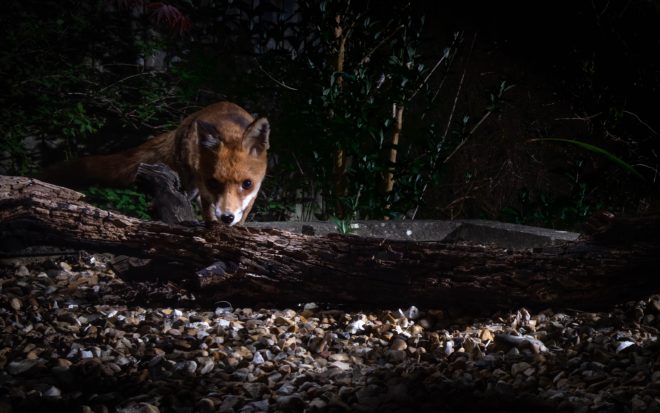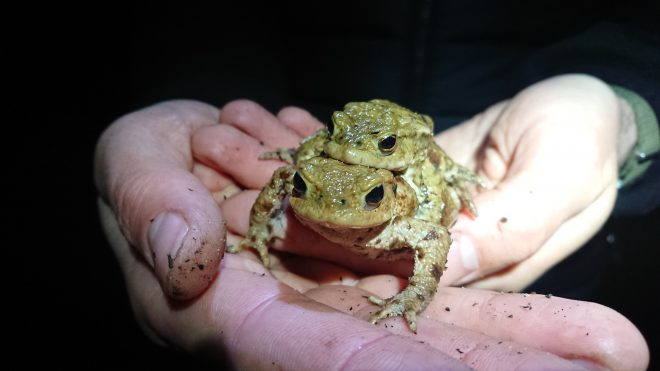Creatures of the night! A look at nocturnal wildlife
December 6, 2022

As we head into our darkest days of the year, Elinor Newman, a Heathlands Engagement Ranger, takes a look at nature at night.
 Have you ever been for a walk at night? Or sat outside in the darkness? Have you heard rustling in the bushes next to you, or heard a hoot across the road?
Have you ever been for a walk at night? Or sat outside in the darkness? Have you heard rustling in the bushes next to you, or heard a hoot across the road?
One of the categories in this year’s South Downs National Park Astrophotography Competition is Nature at Night, a broad theme covering pictures of nocturnal wildlife, people out at night in the landscape, and trees and other plants illuminated by the stars or the moon. So, if you were to head outside into the darkness this winter, what nocturnal wildlife might you come across?
The first group of wintry nocturnal wildlife that comes to mind are owls. Winter is a great time to get to know these wonderful birds.
Not all owl species are nocturnal; some hunt during the day and some are crepuscular or most active at dawn and dusk (wonderful word, crepuscular!). This time of year you might see the ghostly barn owl, scouring, or quartering, along field boundaries for their preferred prey of mice and voles.
Their wings are designed so that they fly almost silently and the shape of their face focuses sound to pick up the tiniest twitch.
Or you may hear the call of the tawny owl, too-whit, too-whoo, which is actually two owls calling to each other. Tawny owls are the most traditionally nocturnal owl, living in woodland, farmland and even in some urban areas. They have big dark brown eyes to help them see in the dark while crepuscular owls, like the barn owl, have amber eyes, and day-hunting owls, such as the short-eared owl have yellow ones. Shorties, as they are affectionately known, have been seen regularly in the winter at Seven Sisters Country Park.
Other species that you might see on a winter’s night of the four-legged variety include foxes, badgers and deer. Keep your eyes open for your local foxes even if you live in a big city – urban foxes are on the rise! I have often seen foxes running across roads at night so watch out for them if you are driving. If you are really lucky, you might see a badger, snuffling around, although they are less active in the cold winter months. Deer are generally more active at dawn and dusk and can look majestic in a wintry landscape.
It is unlikely that you will see any of our cold-blooded amphibian friends in the depths of winter but I have seen common toads out in the dark in early February, crawling along a path. We are lucky to have both native species of toad in the National Park, Common and Natterjack. It’s always a treat to see a toad!

Photographing nature at night, especially fast-moving, shy, nocturnal wildlife might seem tricky. Try being creative and playful in your approach, use the light of the moon (the next full moons is 6 January), or become crepuscular and make use of the light just after sunset or just before sunrise.
At this time of year it can be great to get out early in the morning and look for dew, or frost, highlighted spiderwebs or perhaps try and capture them in the moonlight. Remember to be respectful of any wildlife, especially as this is a difficult time of year for them as well, and always follow the countryside code.
There’s so much to explore after dark, so get out and embrace the darkness!
Other birds associated with the night include migratory species like the nightingale and the nightjar, both of which fly thousands of miles from southern Africa every spring to nest in suitable habitat across the National Park. Both have clever plumage and are extremely well-camouflaged in their breeding habitats making them difficult to see, even in the day-time, while their unusual or distinctive night-time songs are often better indicators of their presence.
Another group of animals that fly by night are the bats. Bats are mammals, and in this country, they prey primarily on nocturnal insect species, including midges, mosquitos, moths and beetles. We have 18 species of bat in the UK, with 17 of those species having been recorded in the National Park.
There are also some amazing beetles to look out for, including the increasingly endangered stag beetle, the impressive tanner beetle, and glow worms of course!
I’m also a big fan of our magnificent moths – we have over 2,500 species in the UK, not all of whom are active solely at night – many species fly during the day.
I would highly recommend going along to a moth event if you have the opportunity, for a chance to get a closer look at some of these magnificent creatures!
To enter this year’s astrophotography competition visit www.southdowns.gov.uk/dark-night-skies/enter-the-2022-2023-astrophotography-competition/
The deadline for entries is midnight on 11 January. Good luck!
